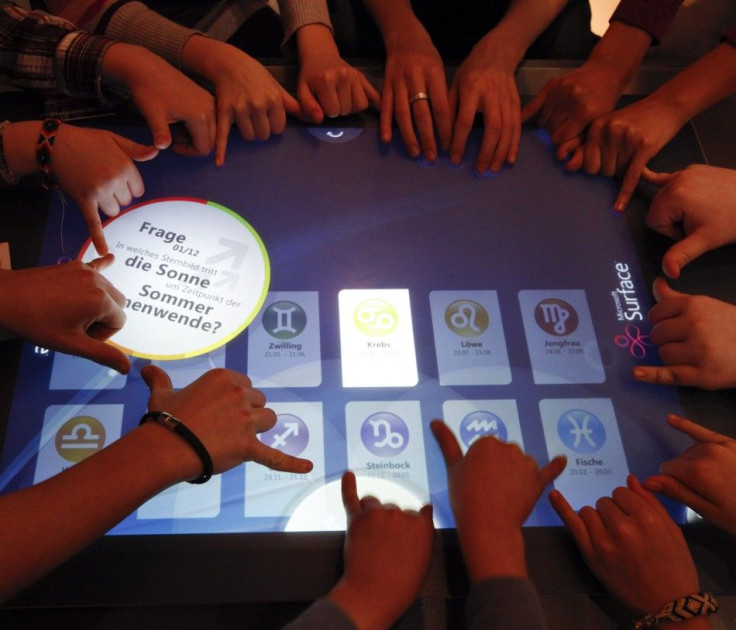Microsoft Surface 2, a Table-Sized Touchscreen Device, Now Taking Pre-Orders

Microsoft, which has prospered via small systems like the PC, now hopes to chart a new course with its latest offering called the Microsoft Surface 2, a gigantic coffee-table sized device with built-in touchscreen capabilities. The list price: $8,900. The Samsung Electronics-developed version of the touch-screen table has begun taking pre-orders in 23 countries, with its release date pegged for early 2012.
The original Microsoft Surface, which was shown at the All Things Digital Conference in 2007, used a combination of cameras, computers and touch sensors to allow multiple people to interact with on-screen activities. The original format was also roughly the size of a coffee table, but its support system switched out four legs with a bulky block. Despite the shortcomings of its design, the original table device impressed during a 2008 demonstration, when a Microsoft representative placed a smartphone on the Surface and the table recognized and displayed information about the device directly on the surface.
In the next-generation update, Redmond, Wash.-Microsoft worked with Samsung to make the Surface thinner, smarter and easier to use in real-life settings.
We had to make an LCD that was robust enough to be in environments such as bars, restaurants and other public spaces, said Pete Kyriacou, group product manager for Microsoft.
The new model, which Samsung calls the Samsung SUR 40 for Microsoft Surface, is more of a mouthful but packs a powerful punch. The model itself is far thinner and stands on four legs, but beneath Microsoft Surface's Gorilla Glass screen is an AMD Athlon II X2 dual-core processor that runs at 2.9 GHz and a powerful graphics processor. All of the technology is built directly into the device's 40-inch LCD touch screen, which leverages PixelSense Technology to see without using a camera.
Every pixel is acting as a camera, so the surface of the PC can actually see, Microsoft explained.
The device leverages infrared technology to allow up to 50 different points of simultaneous interaction; in other words, five people using all of their fingers can use the device at once, even if they're doing different activities like painting, watching a movie or moving around and resizing images.
When we approached Samsung and worked with them to come up with a mechanism to have the LCD panel sense in infrared, suddenly the barriers were gone and we were able to process all of this data, said Nigel Keam, an architect on Surface.
The Microsoft Surface 2 is an extremely attractive innovation with multiple purposes but at $8,900, the company believes the device may be used in first ijn instutions like hospitals, retail stores and casinos.
Microsoft has opened the doors for developers who want to build customized apps for the Samsung SUR 40, offering a deverlopers' toolkit as a free download from the Surface Developers Center.
People could have an interactive experience with the walls and counters and tables in their environment, and all flat surfaces could come to life with technology, said Doug Kramer, senior software development lead for Microsoft.
What do you think of the device? Tell us how you would use the Microsoft Surface in the comments section below.
© Copyright IBTimes 2025. All rights reserved.






















